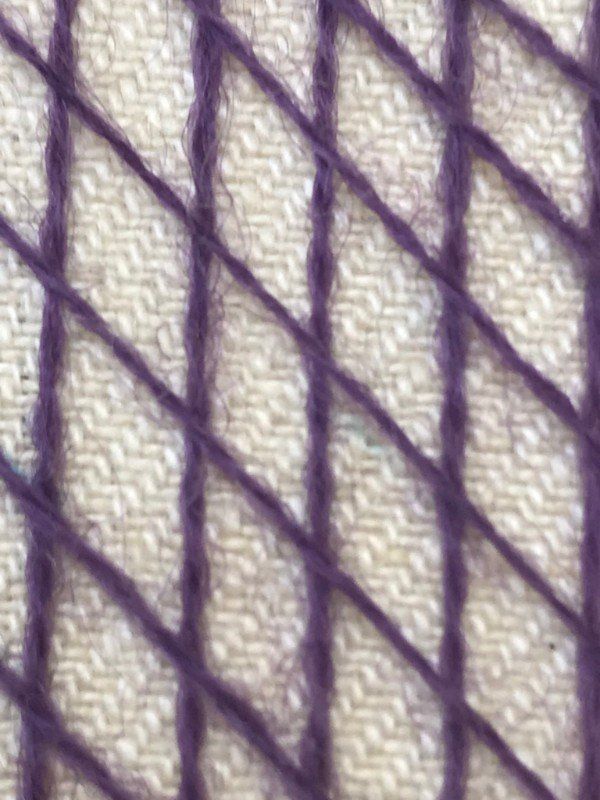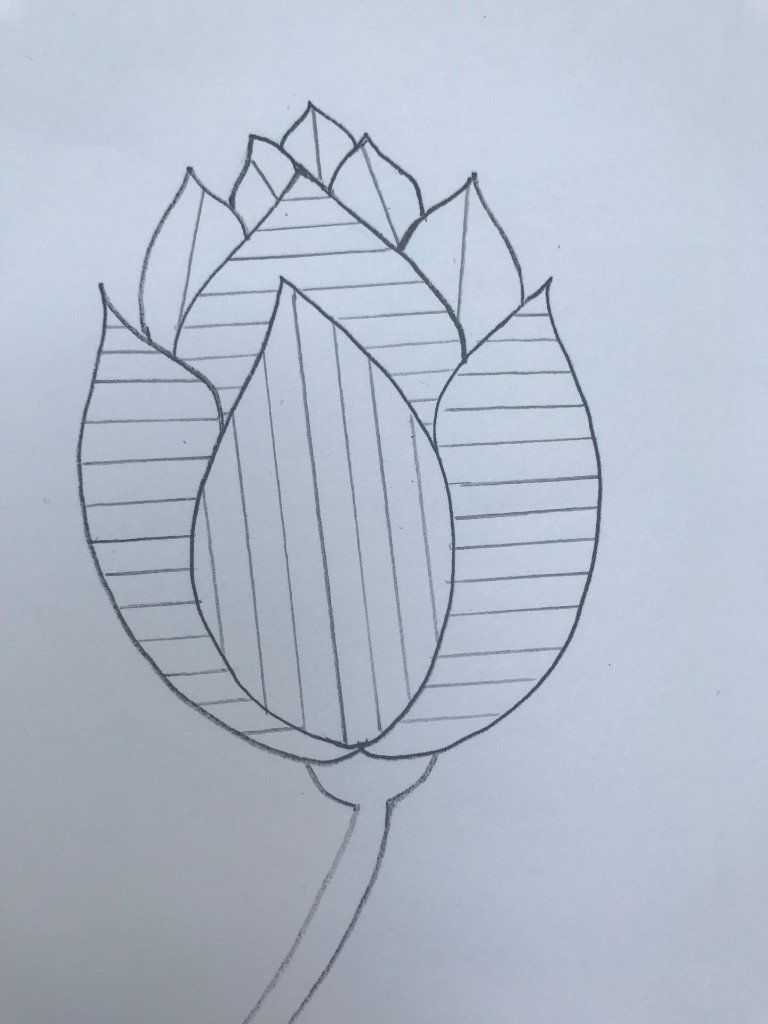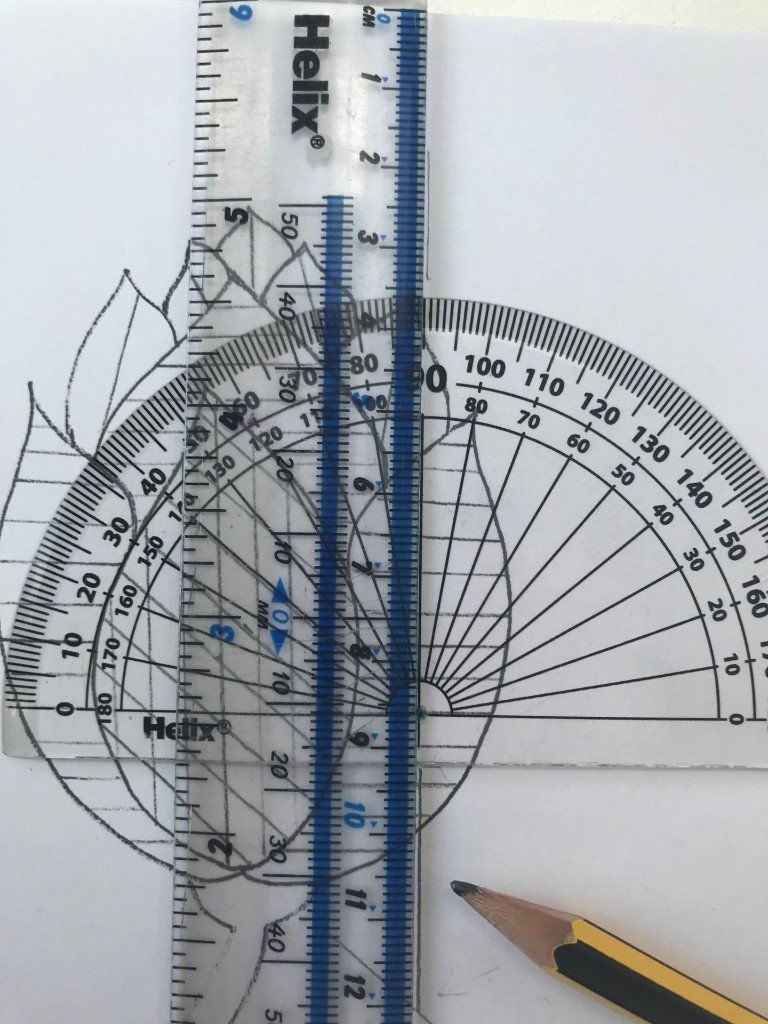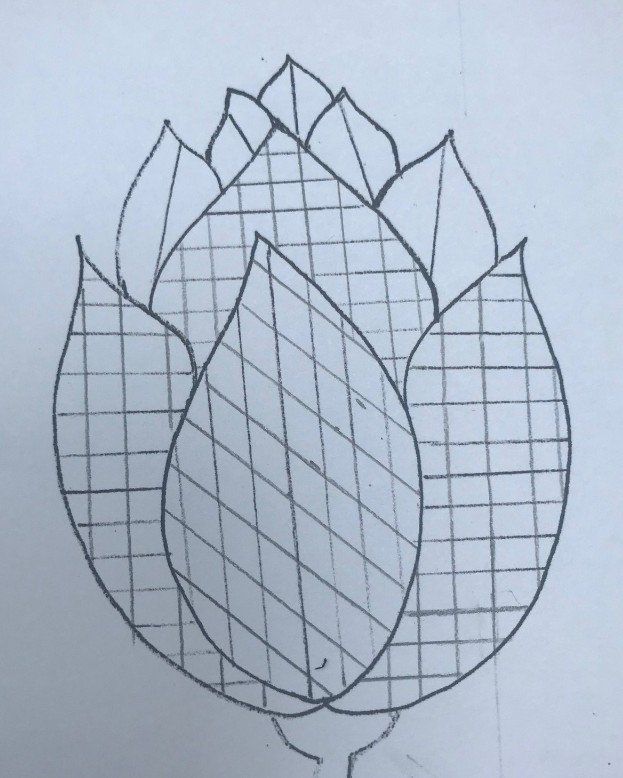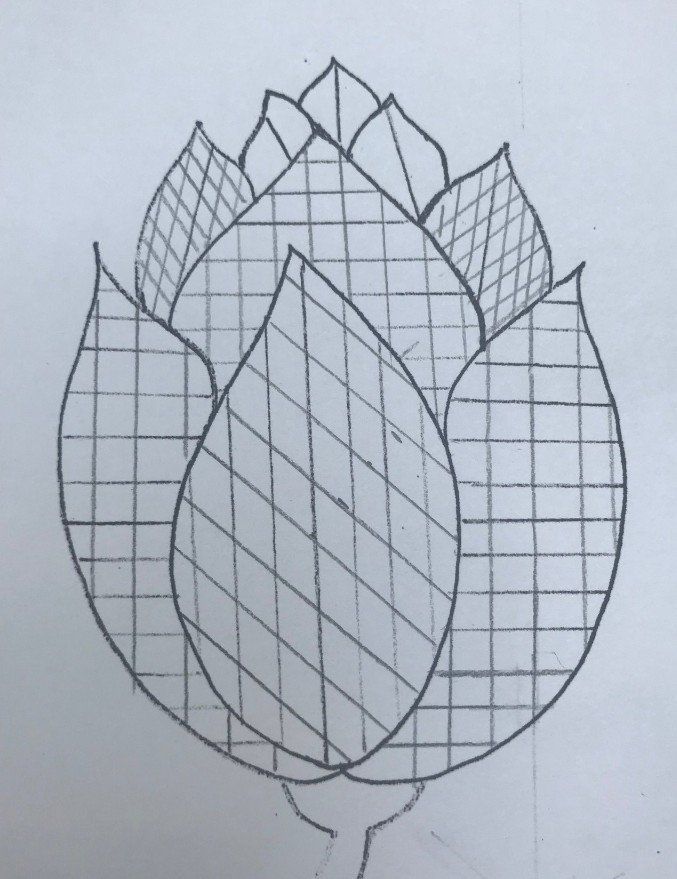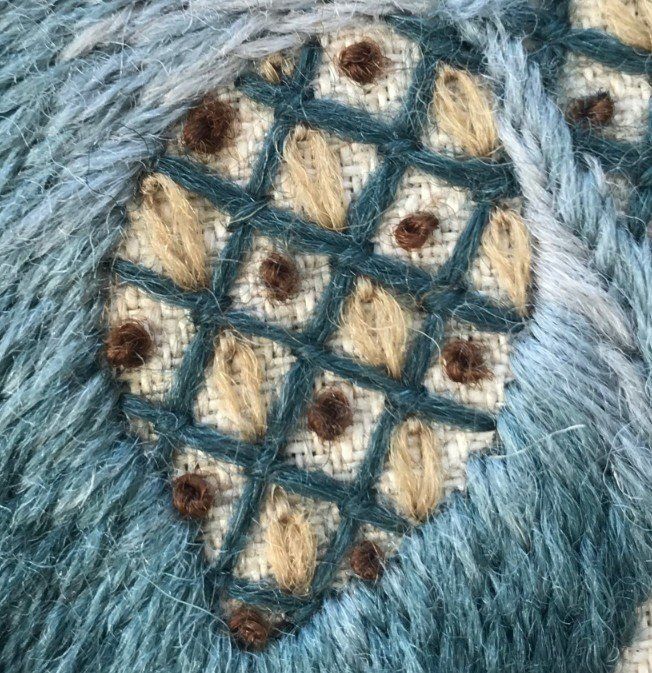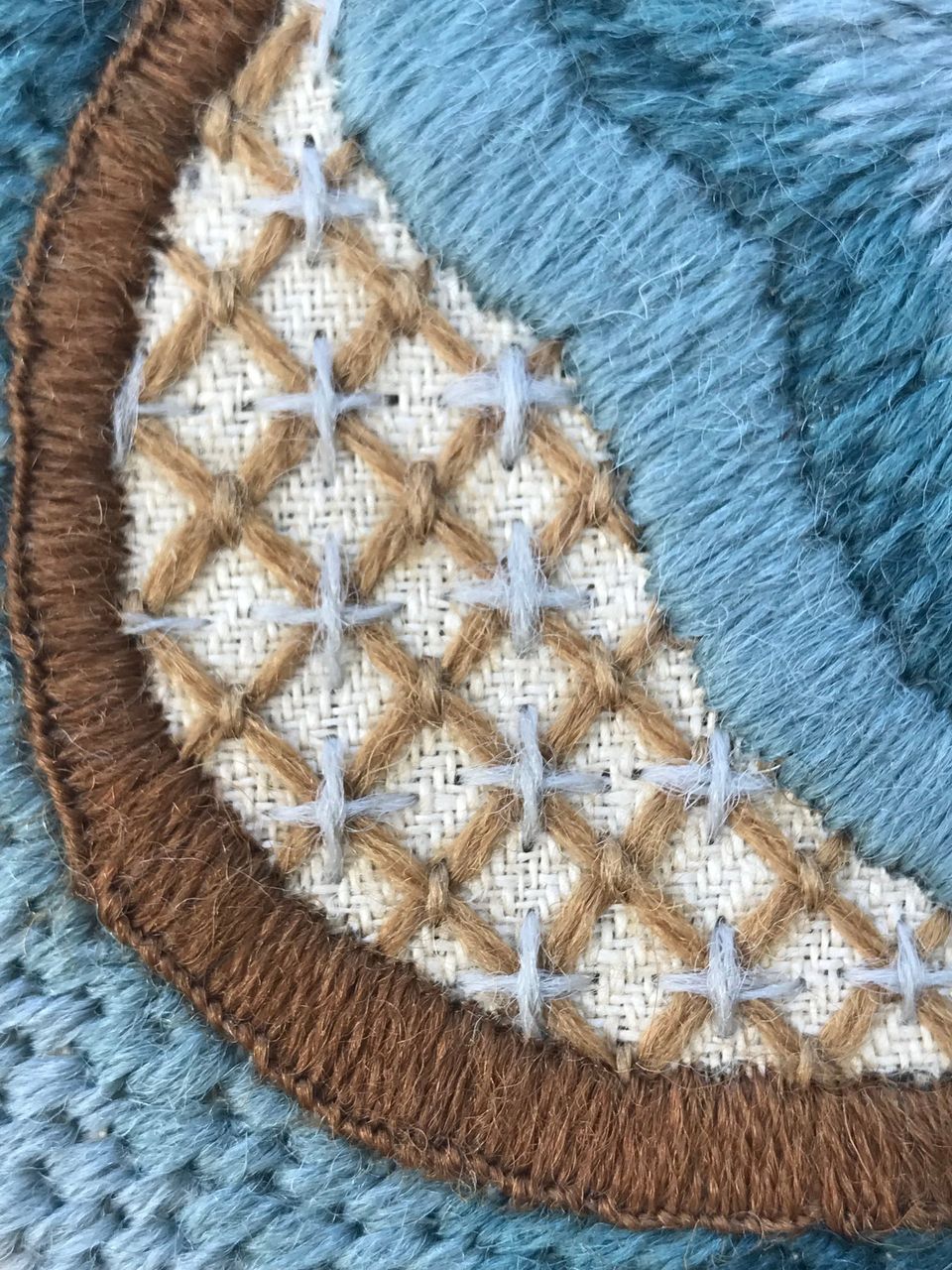A visual guide on how to decide how you should fill an embroidery shape with a filling stitch.
Filling stitches in embroidery can vary greatly. In this blog I would like to help you design your own. The key to a professional finish is to get the 'structure' set up correctly. Some people are happy to lay the trellis stitches by eye but if you need some help this article is for you. I will be showing to create trellis couched stitch and honeycomb filling stitch.
Most filling stiches will need to fit into a shape.Its advisable to plan the direction you would like to follow by carrying out a plan before you start embroidering, so photocopy your design onto a piece of paper before you start to help plan what you would like to achieve.
I find it useful to plan the direction of the bottom thread first. Afterwards you can start to think about if you want the thread to run straight at 90degrees to the bottom thread or diagonally at 45 degrees to the bottom thread. I decided to make the central motif on the diagonal and the side and top pieces to be on the straight.
Start filling in the bottom lines with a pencil and ruler. I find a 3 to 5mm gap is normally large enough. 3mm perhaps if you are using cotton floss and 5mm if you are using 2ply Appleton wool. Any thicker threads you may need to go wider. Think about the size of the piece. If you are going to carry out some stitches inside the boxes then remember to leave a large enough gap, you don't want your stitches to become too squashed.
You can use a protractor (the semi circular piece of plastic shown above) to work out the vertical lines. Place the bottom line of the protractor onto one of the horizontal lines drawn and then line up a ruler from the marked 90 degree angle to the central point of the protractor.
Use the protractor again to help mark the diagonal lines. Place the protractor on one of the vertical lines previously drawn, line up the line marked with the 90 degree angle. Place a ruler along the 45 degree line and mark two points on the design...one at the top and one a t the bottom. Remove the protractor and then using a ruler lined up with the marks previously made draw the diagonal lines. Spacing the same distance as the first row of lines.
I decided to fill in two more of the smaller motifs with honeycomb filling stitch. I decided to reduce the scale to create depth and interest to the piece. When you happy with the direction of the trellis stitches photocopy the design and start thinking about the filling and couching stitches.
Think about the filling stitches and how you are going to couch the lattice stitches down. You can use a mixture of threads like silks and wools. Beads could be used in the centre of some of the shapes. Shown below are just a few examples but once the framework is in you can achieve some wonderful patterns.



